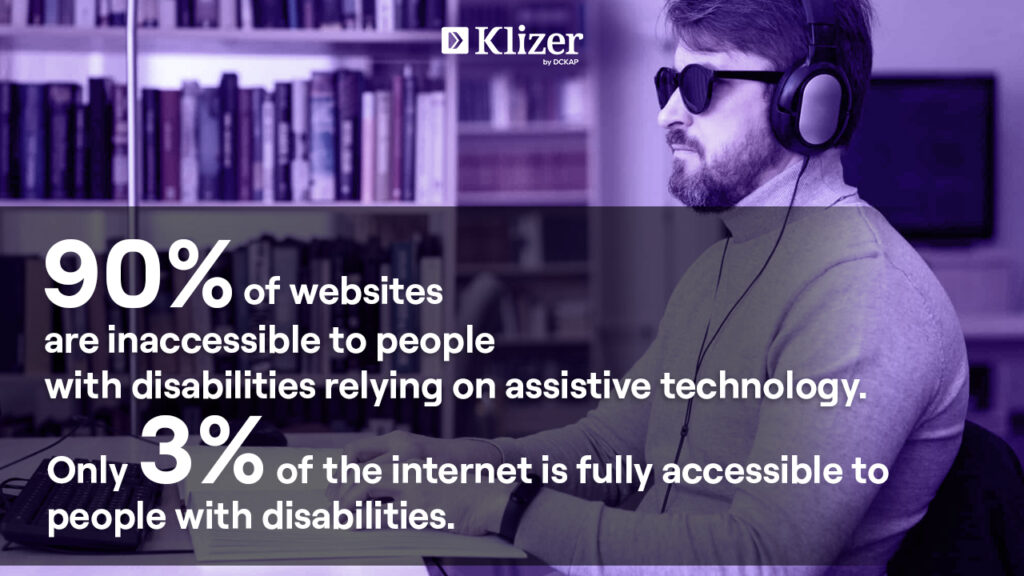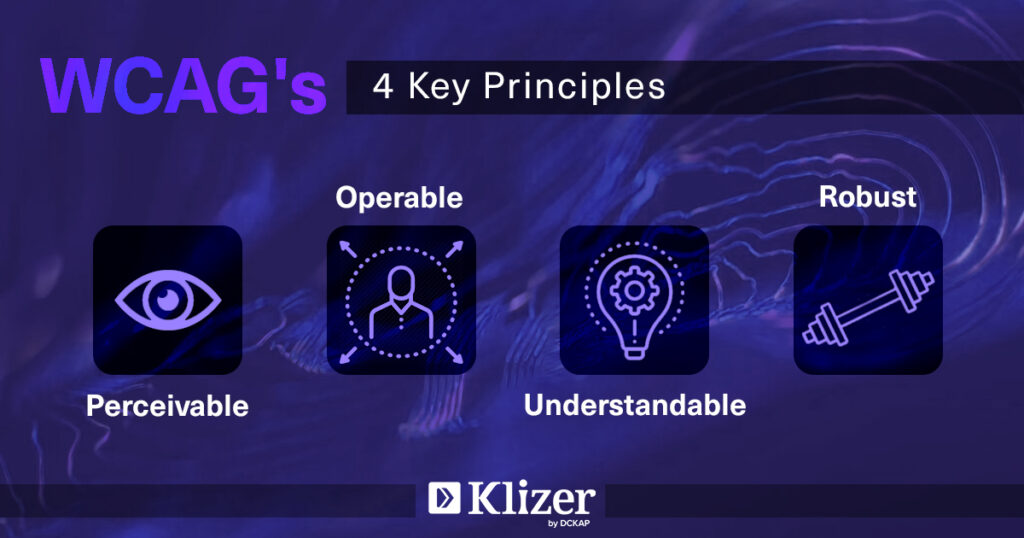Many websites and digital products are not accessible to people with disabilities. The Americans with Disabilities Act (ADA), created in 1990, was designed to stop discrimination against people with disabilities in areas like education, work, and public services. However, many websites and software don’t meet the needs of these users.
ADA compliance testing is important because it checks whether digital products follow ADA rules. This testing helps businesses find and fix issues, such as hard-to-navigate websites or missing descriptions for images, so that everyone, including people with disabilities, can use them easily. It also helps companies avoid legal problems and create more inclusive online experiences.
In this blog, learn why ADA compliance testing matters for your ecommerce website and how you can make it ADA-compliant.
Key Takeaways
- Explore the importance of ADA compliance testing and why it should be a must for your ecommerce store.
- Learn the risks of non-compliance, including fines, lawsuits, and reputation damage.
- Understand the key WCAG guidelines to ensure your website is accessible to all users.
- Learn best practices for ongoing ADA testing and improvements.
Understanding ADA Compliance for Ecommerce Website
ON THIS PAGE
Why is ADA Compliance Testing important for eCommerce websites?

Larger Target Audience
ADA compliance ensures your website is accessible to 13.5% of the U.S. population with disabilities. Since 75% of people with disabilities use the internet, accessibility helps your online store to reach a broader audience.
Building Brand Recognition:
Focusing on accessibility shows your commitment to inclusivity. This approach builds trust and enhances your brand reputation, which attracts more customers to your ecommerce stores.
Improving User Experience:
ADA compliance improves website navigation and usability for all users. By ensuring accessibility, you can provide a better overall user experience, which increases customer satisfaction.
Avoiding Lawsuits and Penalties:
Non-compliance can lead to fines ranging from $55,000 to $150,000. In 2022, there were 8,694 ADA-related lawsuits. It shows the importance of meeting accessibility standards to avoid legal issues.
Methods to Test Your eCommerce Website for ADA Compliance
To test your online store’s website for ADA compliance, you can use automated testing and manual testing methods. You can also use a combination of both methods to make your website ADA-compliant.
Manual ADA Compliance Testing
Manual testing involves using assistive technologies like screen readers and magnifiers to check your website. This method is the most accurate but takes more time.
Steps for manual testing:
- Choose the assistive technologies to use.
- Set up your website and the assistive tools.
- Browse your website with the assistive technologies.
- Look for any accessibility problems.
- Fix the issues you find.
Automated ADA Compliance Testing
- Automated testing uses software tools to scan websites for accessibility issues quickly. This method is faster, but automated tools can’t identify every problem.
- Use tools like Lighthouse, WAVE, or aXe to perform automated testing. These tools scan your website and create a report listing any accessibility issues found.
- After generating the report, you should manually check it to make sure all issues have been identified and fixed.
How Can You Test Your Website for ADA Compliance?
Conducting a manual ADA audit or using free tools can be a time-consuming and risky process that can affect your website’s compliance. You can hire an experienced ADA complaint testing agency like Klizer to perform a thorough accessibility audit of your website and create a plan to make it ADA-compliant. They can also implement the necessary changes that allow you to focus on your business growth.
How Often Should You Perform ADA Compliance Testing?
The frequency of ADA compliance testing depends on factors like the size of your digital presence, how often you update it, and the risks of not meeting accessibility standards. Here’s a simple guide for how often to perform ADA testing:
Initial Assessment: Test for ADA compliance when you first create or redesign an ecommerce website or app.
Quarterly Audits: Perform a thorough ADA check at least once every three months to identify any new issues or changes that can impact accessibility.
After Major Updates: Test ADA compliance after making major changes to your ecommerce stores, such as redesigns or new features.
Following Platform Updates: Test for accessibility whenever the underlying platform like a CMS or framework is updated.
After User Feedback: Conduct testing if users, especially those with disabilities, give feedback about accessibility problems.
New Content or Features: Test ADA compliance when adding new content or features to ensure everything is accessible.
Pre-launch and Pre-release: Always test ADA compliance before launching a website or releasing an update.
Use of Accessibility Checklists: Regularly refer to ADA compliance checklists to ensure ongoing accessibility.
Regulatory Changes: Stay updated on changes to ADA guidelines and conduct testing to meet new standards.
User Testing: Include accessibility in your user testing, gathering input from people with various abilities to find areas for improvement.
Continuous Monitoring: Use tools that monitor ADA compliance in real time and fix any problems as soon as they are detected.
Training and Awareness: Continuously educate your team about ADA compliance to ensure accessibility is a priority in every part of the process.
Who Needs to Perform ADA Testing?
- Web Developers: They build websites and apps. They should make sure that their work follows ADA accessibility rules.
- Quality Assurance (QA) Teams: QA teams test websites and apps to check if they meet ADA standards. They look for accessibility issues and ensure the final product is usable for everyone.
- UX/UI Designers: Designers create the look and layout of websites. They should ensure the site is easy for all users to navigate, including people with disabilities. They work with developers to include accessibility features.
- Content Creators and Writers: Writers and editors ensure that text-based content, such as articles and captions for videos, is accessible to people with disabilities.
- Project Managers: Project managers guide the entire development process. They make sure that ADA website compliance is part of the project goals and schedule. They also allocate resources for ADA testing.
- Compliance Officers/Legal Advisors: These experts provide advice on ADA laws. They make sure that the digital content meets legal requirements to avoid potential legal issues.
Best Practices for ADA Testing
Understand the Guidelines: Start by thoroughly familiarizing yourself with ADA requirements and WCAG standards to ensure comprehensive compliance.
Automate Basic Checks: Use automated tools to quickly identify common accessibility issues, which streamlines the initial testing process.
Conduct Manual Testing: Supplement automated tests with manual checks to uncover more subtle accessibility challenges that tools might miss.
Test Across Devices and Browsers: Ensure your ecommerce website or application functions properly across various devices, screen sizes, and browsers to guarantee accessibility for all users.
Involve Users with Disabilities: Include users with disabilities in the testing process to gain valuable feedback and insights on real-world accessibility issues.
Document Findings: Keep detailed records of issues identified during testing to make resolution more efficient and to aid in future updates.
Focus on Continuous Improvement: Regularly review and update your site’s accessibility features to stay compliant with evolving standards and ensure ongoing inclusivity.
Train Your Team: Provide regular training on accessibility best practices to empower your team and ensure they are equipped to implement accessible solutions.
Consult Experts: For complex websites or applications, consider seeking advice from accessibility professionals to ensure thorough evaluation and compliance.
Streamline Testing Workflows: Establish clear and efficient workflows to ensure ADA testing is organized and consistently executed.
Design Intuitive Navigation: Create user-friendly and accessible navigation that is easy for all users, including those with disabilities, to navigate effectively.
What are the Requirements for Making Your Website ADA-Compliant?
To ensure that a website is accessible under the Americans with Disabilities Act (ADA), web accessibility testing is commonly conducted based on the Web Content Accessibility Guidelines (WCAG) 2.0. ADA does not have specific website rules, but courts often use WCAG as the standard for accessibility.
WCAG’s 4 Key Principles

- Perceivable: Content must be presented in ways users can perceive. This helps you increase your sales.
For example, provide text descriptions for images and videos, and use captions for audio and video content.
- Operable: Make sure the website can be used with a keyboard. Give users enough time to read and use content. Avoid anything that could cause seizures like flashing lights.
- Understandable: The content should be clear and easy to understand. The website should be easy to navigate, and help users correct mistakes, such as in forms.
- Robust: The website should be compatible with current and future technologies, including assistive devices like screen readers.
Consequences of Not Having an ADA-Compliant Website
Lawsuits: eCommerce website owners can be sued by individuals with disabilities or advocacy groups for not meeting accessibility standards. This can lead to court costs, financial settlements, and legal fees.
Legal Expenses: Defending against ADA-related lawsuits can be expensive, even if the case is won. Legal costs can quickly add up.
Damages: Courts may require website owners to pay damages to individuals harmed by the lack of accessibility, along with corrective actions to fix the website.
Department of Justice (DOJ) Investigations: The DOJ can investigate ADA non-compliance. If they find violations, they can take legal action or negotiate settlements.
Reputational Damage: A non-compliant website can damage your B2B ecommerce store’s reputation, which causes a loss of trust from customers and reduces website traffic.
In addition to these legal and financial risks, a non-compliant website can face technical issues, lower search engine rankings, and reduced website performance, leading to further losses. Therefore, maintaining ADA compliance is essential for avoiding these negative consequences.
Make Your eCommerce Website ADA-Compliant With Klizer
ADA compliance ensures your ecommerce website is accessible to everyone, including people with disabilities. This inclusivity helps you build trust with customers and improve your brand reputation. Ensuring ADA compliance can protect you from legal issues, fines, and lawsuits, ultimately helping grow your online store.
ADA compliance service agencies like Klizer can help you reach a larger audience. The ADA compliance solution experts can assist you make your store accessible to a wider audience. Get in touch with us to know what improvements can be made in your online store.
FAQs
What is ADA compliance testing?
ADA compliance testing is a process that checks if a website is accessible to people with disabilities, following the rules of the Americans with Disabilities Act (ADA). The main purpose of this testing is to find any issues that may prevent people with disabilities from using the website and to fix them, which makes the site more accessible to everyone.
What are the key features of an ADA-compliant website?
An ADA-compliant website should include several accessibility features to ensure all users can navigate it easily.
- This includes providing alternative text for images, which helps visually impaired users by describing the images.
- The language used on the website should be clear and simple, avoiding technical terms that can confuse some users.
- It should also support keyboard navigation, which allows users to move through the site without needing a mouse.
- High color contrast between text and background makes reading easier for those with visual impairments.
- The site should be compatible with screen reader software, so visually impaired users can hear the content read aloud.
What is accessibility compliance testing?
Accessibility compliance testing is the process of checking if websites and online applications are easy to use for people with disabilities. The aim is to make sure that everyone, including people with visual, hearing, or other impairments, can access and navigate the site without difficulty. Websites that follow the Web Content Accessibility Guidelines (WCAG) are usually considered accessible.







